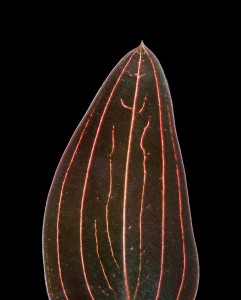As a plant collector myself, I thought about sharing some really interesting surfaces of living plants from the plants that I’ve tried growing myself!
I’m not sure if this is applicable to surface design per say as we can’t preserve or harness these textures, but its no doubt good points for inspirations!
Living Velvet
Introducing Ludisia Discolor! a type of Jewel orchid grown specially for its folliage. Interestingly its an orchid that grows in soil! What really makes this unique is the way its leaves are textured, when bent against the light, it exhibits a very velvet-like texture. These plants can be bought from most orchid nurseries in Singapore and they are really cheap! whats cool about these textures is that they turn a bright red under sunlight and retreat to a deep green when in shade. These are generally easy to grow plants as well!
Orchid Fur
Contrary to popular belief, orchids do grow fur too! introducing Dendrobium Senile, Senile meaning old, it resembles that of a really old person, with white hairs throughout its body!
These are specially grown for its fur-like growth and unfortunately for us, these plants require a cold drop in night temperatures to flower which Singapore sadly does not have. The dried bulbs of these plants could be used for some sort of surface material?
Living Metal
Similarly to Ludisia Discolor, Malaxis Metallica which is yet another jewel orchid showcases a very metallic appearance of its leaves. Under lighting, they glow in a high definition gloss that plant collectors go for! Perhaps the purplish tinge could be used as a dye as well? unfortunately these plants are valuable that one should think twice before extracting their pigments.












